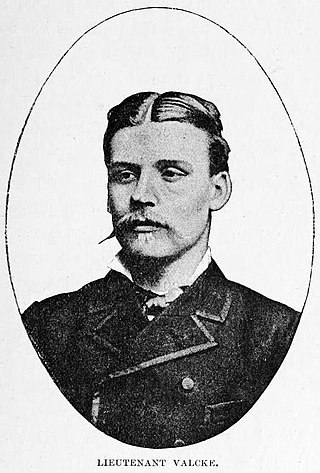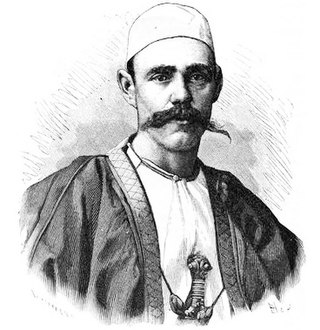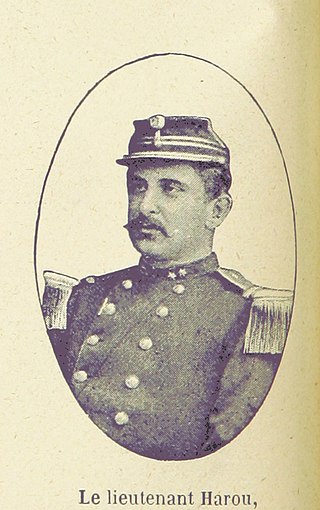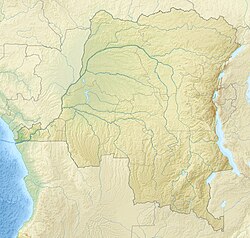History
In 1880 Henry Morton Stanley established stations for the International African Association at Vivi, Isanghila, Lukungo, Manyanga South and Leopoldville below Stanley Pool. Stanley returned to Vivi on 4 July 1882 and began organizing an expedition up the Congo River to the Stanley Falls, which would take control of the country along the route. When Louis Valcke and Alphonse van Gèle arrived in Vivi with a contingent of Zanzibari troops soon after, Stanley at once instructed them to work on construction of the road from Vivi to Isangila, bypassing the rapids and leading to the navigable section up to Manyanga, then to connect Manyanga to Léopoldville. The work had to be done quickly so the dismantled Association internationale Africaine steamer and goods could be carried to Léopoldville for the planned expedition.
The road to Isangila is mentioned by William Holman Bentley in his account of the Baptist Missionary Society, which came to the lower Congo in 1878. The African traders refused to let them travel up to Stanley Pool, for fear that they would bypass them and destroy the trade. Eventually they heard of Stanley's new steamer-road, which they found to extend about 50 miles (80 km) from Vivi along the north bank up to Isangila. From there they managed to travel quickly and unobtrusively up to the Pool. The Baptist missionary George Grenfell established a chain of missions at Musuko, Isangila and Manyanga.

George Grenfell (21 August 1849, in Sancreed, Cornwall – 1 July 1906, in Basoko, Congo Free State was a Cornish missionary and explorer.
The Livingstone Inland Mission (LIM) was an evangelical missionary society that operated in what is now the Democratic Republic of the Congo between 1878 and 1884.

Alphonse van Gèle, also written van Gele or Vangele, was a Belgian soldier who served as the Vice-Governor General of the Congo Free State from December 1897 until January 1899. He established the Equator Station, or Station de l’Équateur, today Mbandaka, and concluded a treaty with the powerful Zanzibar trader Tippu Tip at the Stanley Falls station, today Kisangani. He is known for having confirmed that the Uele River was the upper part of the Ubangi River.

Guillaume-Camille Casman was a Belgian soldier, explorer and administrator for the International African Association and the Congo Free State. He was briefly commander of the Équateur station on the upper Congo.

Louis Pierre Alphonse Valcke was a Belgian viceroy and soldier.

Manyanga was a staging post on the route from the coast to Léopoldville during the days of the Congo Free State. It was at the upper end of a navigable reach of the Congo River from Isangila, further downstream to the west. Above Manyanga goods had to be carried by land round the falls and rapids to Stanley Pool.

Edmond-Winnie-Victor Hanssens was a Belgian soldier and colonial administrator. He did much to establish the Belgian presence on the Upper Congo River in the last two years of his life.

Arvid Mauritz Wester was a Swedish soldier who was active in the service of the Belgians in the Congo. For almost two years he commanded the remote station at Stanley Falls, where he had to deal with hostile local people and Arabs.

Sten Edvard Gleerup, or Edde Gleerup, was a Swedish soldier and explorer. He was the first Swede and eighth European to cross Africa.
Louis-Gustave Amelot was a Belgian mechanical engineer who served with the International African Association, the precursor to the Congo Free State.
Kimpoko is a district within Maluku municipality in the Democratic Republic of the Congo.

Henri Michel Eugène Avaert was a Belgian soldier and colonial administrator in the Congo Free State. He was the second commander of the Force Publique, the armed police.

Victor Eugène Jules Harou was a Belgian soldier and explorer.
H. E. Crudgington (1852–1931); Henry Edmund Crudgington, was a Baptist missionary from Ireland who was active in the Congo region before the Congo Free State was established.
Théodore Victor Edouard Adolphe Arthur Nilis was a Belgian soldier and colonial official.

Nicolas Grang was a Luxembourger soldier who died during an expedition to the Congo.

Joseph Vandevelde, or Jozef Van de Velde was a Belgian soldier and explorer in the Congo before the Congo Free State was established.
Emile-Désiré Parfonry was a Belgian soldier who served in the Congo before the Congo Free State was established.

The En Avant (Forward) was a small steam launch used in the early days of European exploration of the Congo River basin. It was carried in sections past the cataracts of the lower Congo, reassembled at Stanley Pool and launched in December 1881, the first powered vessel on the long navigable section between the cataracts and the Stanley Falls . In the years that followed it played an important role in exploring the Congo river system and carrying Europeans up and down the river and the tributaries as they established trading stations.

General Charles-Marie de Braconnier, or Carlos Braconnier was a Belgian soldier who participated in the expeditions led by Henry Morton Stanley and was the founder and first commander of the station of Léopoldville.
This page is based on this
Wikipedia article Text is available under the
CC BY-SA 4.0 license; additional terms may apply.
Images, videos and audio are available under their respective licenses.















